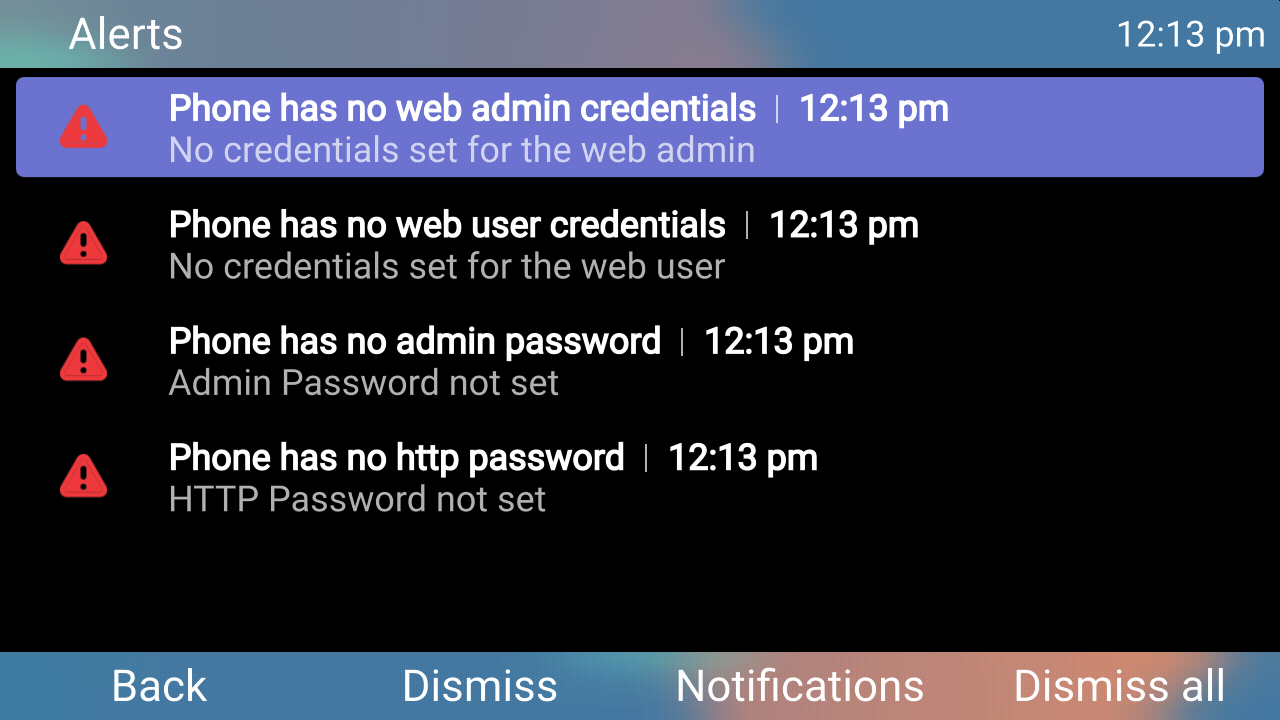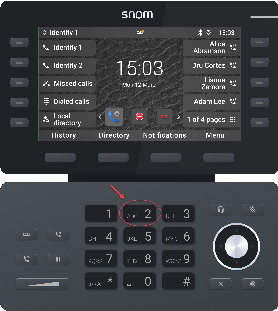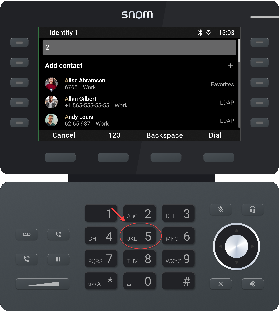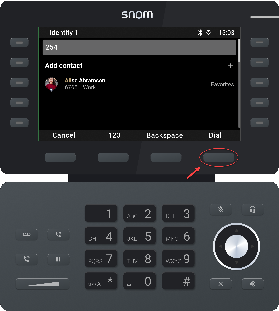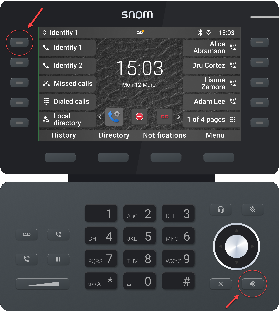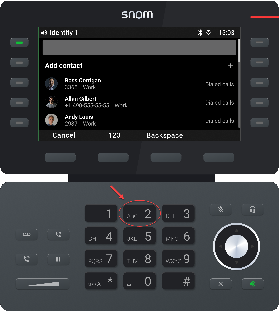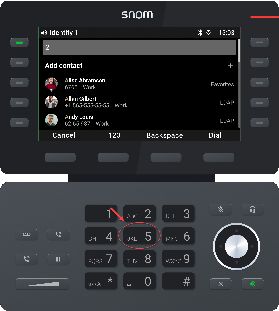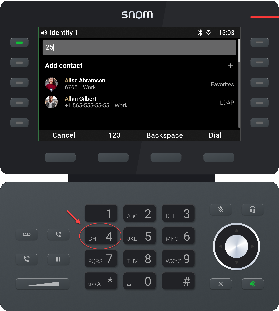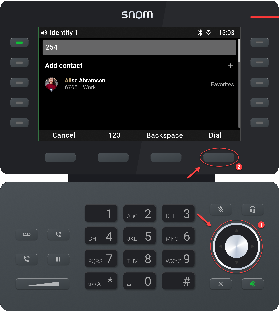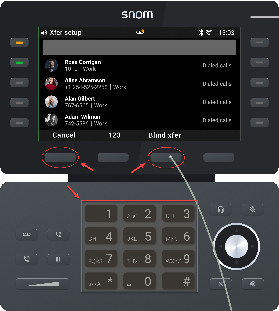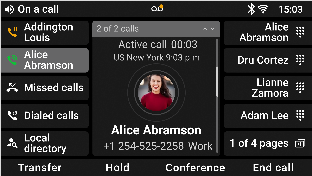Content
With this page we want to make it easier to configure D862 / D865 / and later models and integrate them into existing provisioning.
See also, D862 Manual and D865 Manual.
Index: |
Introduction
The phone "under the hood" is still the same, as you learned from the past 25 years. It works as before, however it got a very new User Interface on the Display and a completely new web interface, we call it "Phone Manager".
Currently, our new Webuser Interface, the "Phone Manager" is accessible only via HTTPS and we moved the good old WEB-UI to the port 3112, however with HTTP only.
On the "PUI" you will see, that some features were re-designed and some of them are new. These are listed below.
Setting up a Snom Phone - Step-by-step
How to connect and setup your new phone, you can read into this article: Setting up a Snom Deskphone
Known Limitation
When planning the new D8xx series, we decided to make many things completely new, including the web interface (Phone Manager). Since we have started from scratch, not all functions are so perfect that we would like to release them today (January 2023). In the following table you will find the functions listed and when they are expected.
| Feature | Release expected |
|---|---|
| Keyboard Lock | Q1 - 2024 |
| Dialing Plan | Released |
| Minibrowser | Released |
| Customizing | |
| Q1 - 2024 |
| Q2 - 2024 |
The Welcome Screen
The Welcome Screen provides some basic information about the phone, also the IP address where the Phone Manager, the new Web Management Tool of the Snom D8xx, can be reached.
This screen is driven by the PUI language setting, which is in factory default empty. Once this setting has a value the screen is not shown anymore, this screen exchanges the old installation wizard of the phone, where we asked for the timezone, or for the registrar; The Wizard did not completely disappear, but will be reworked to do more.
The screen can also be dismissed by pressing the X (Cancel) button on the phone.
Related parameters
- language → This is by default empty ( this triggers the Welcome Screen ); pressing the X ( Cancel ) button, the language will be set to English.
- locale → With this we like to reflect to multiple language region also to make displaying date and time specific to the country.
The Web server (Phone Manager) user credentials & Administrator mode
Differently to the D1xx, D3xx and D7xx phones, the login to the Phone Manager requires either user credentials or admin user credentials. I.e. the credentials you use to log in define the level of access you will have.
The old web server is still available, with HTTP on the Port 3112.
To configure your Snom phone there used to be common usernames and passwords for the phone interface (PUI) and the web interface (WUI). With the new D8xx series we have introduced a new level of security by completely separating the credentials for the phone interface and the web interface. New settings for the web interface / Phone Manager (webserver) have been introduced and the old known "admin_mode_password" setting now controls only the "admin password" for the phone interface (PUI), unlike all previous series.
PUI
The phone runs in "user mode" by default. And it is as usual possible to set this into the "admin mode", provided that this possibility was not deactivated by means of provisioning in the "admin_mode" setting.
- If the admin_mode is switched on, the admin_mode_password must be provided necessarily.
- We support here only numbers between 0 - 9.
WUI
The web interface (Phone Manager), internally also referred to as the web server, has been given the following new setting, via which user names and passwords can now be configured autonomously:
ATTENTION:
- By default, the usernames and passwords of the Phonemanager are empty, both for the "User" and the "Admin". It is essential that you set these credentials manually if your PBX you are using does not do it for you.
- The old WUI needs to be secured the same as it is needed in the former phone series, otherwise your D8xx device isn't secured at all.
Localization - date and time format
The new setting parameter locale defines the date and number format on the phone.
Directory
With devices of the D1xx, D3xx and D7xx series, only one address book existed. If an address book was sent to the phone via XML or HTTP, all local address book entries were automatically overwritten. Exceptions are Metaswitch and LDAP, because no address book data is sent to the phone, but the address data is retrieved in realtime from the server.
With the devices of the D8xx series it is new that we have two address books, a local and a provisioned one. Entries in the local address book are now specially marked and no longer overwritten when provisioning a global address book from the PBX. Nothing has changed for LDAP address books. These can still be integrated.
The D8XX has one directory screen, which can be opened with the F_ADR_BOOK. On this screen the Local, Imported and all other, server based, directories are accessible.
Call related flows - what are different to the previous versions of Snom
Dialing
Predial
- If digits entered only: do T9 name match and number matching;
If non-digits entered: do only name matching
Search directory contacts (local + server side) and call history entries; the priority and scope should be configurable, e.g. contact_source_priority
When there is only one digit in the editor, and press “Backspace”, the string buffer will be empty, but will not back to the homepage. - Sort matched entries by first name alphabetically
- If digits entered only: do T9 name match and number matching;
Live Dial
In live- and pre-dialer, if the onput is empty, then you can see the dialed numbers on the screen
If there was no keypress for a longer time, the screen is closed and the phone returns into the idle mode
- Interdigit activity timeout elapsed; digits entered are dialed
Call Transfer
ATTENDED Transfer
- The Blind xfer softkey keypress will force the transfer dialer to go through the blind transfer route; the effect is that, upon inputting the target numbers, the Dial softkey is replaced by the Blind xfer softkey.
With the dialing buffer empty, user can move the cursor to highlight a dialed entry; the softkey bar shows the Blind xfer softkey and Dial softkey.
- Before the transfer target answers the call, the Transfer softkey keypress would steer the transfer mode into early-attended transfer, i.e. transfer during ringback.
- Before the call to Alice get answered, press the Cancel softkey will end this call.
- Before the call to Alice get answered, press the Cancel softkey will end this call.
- Cancellation of the xfer setup page via Cancel softkey keypress would turn the transfer target’s active call into a standard 2-way call, i.e. like in the conference setup cancellation. The call is not ended due to the cancellation of the role of a transfer target.
- Click on "Transfer" to complete the Call Transfer.
- After the call to Alice get answered, press the Cancel softkey will convert this call into a standard 2-way active call.
- Click on "Transfer" to complete the Call Transfer.
Backlight Sensor / Background Light
The Snom D8XX Phones are equipped with Ambient Light Sensor, these will make possible to show / hide the function keys and decrease / increase the backlight.
Further Information
Related articles


